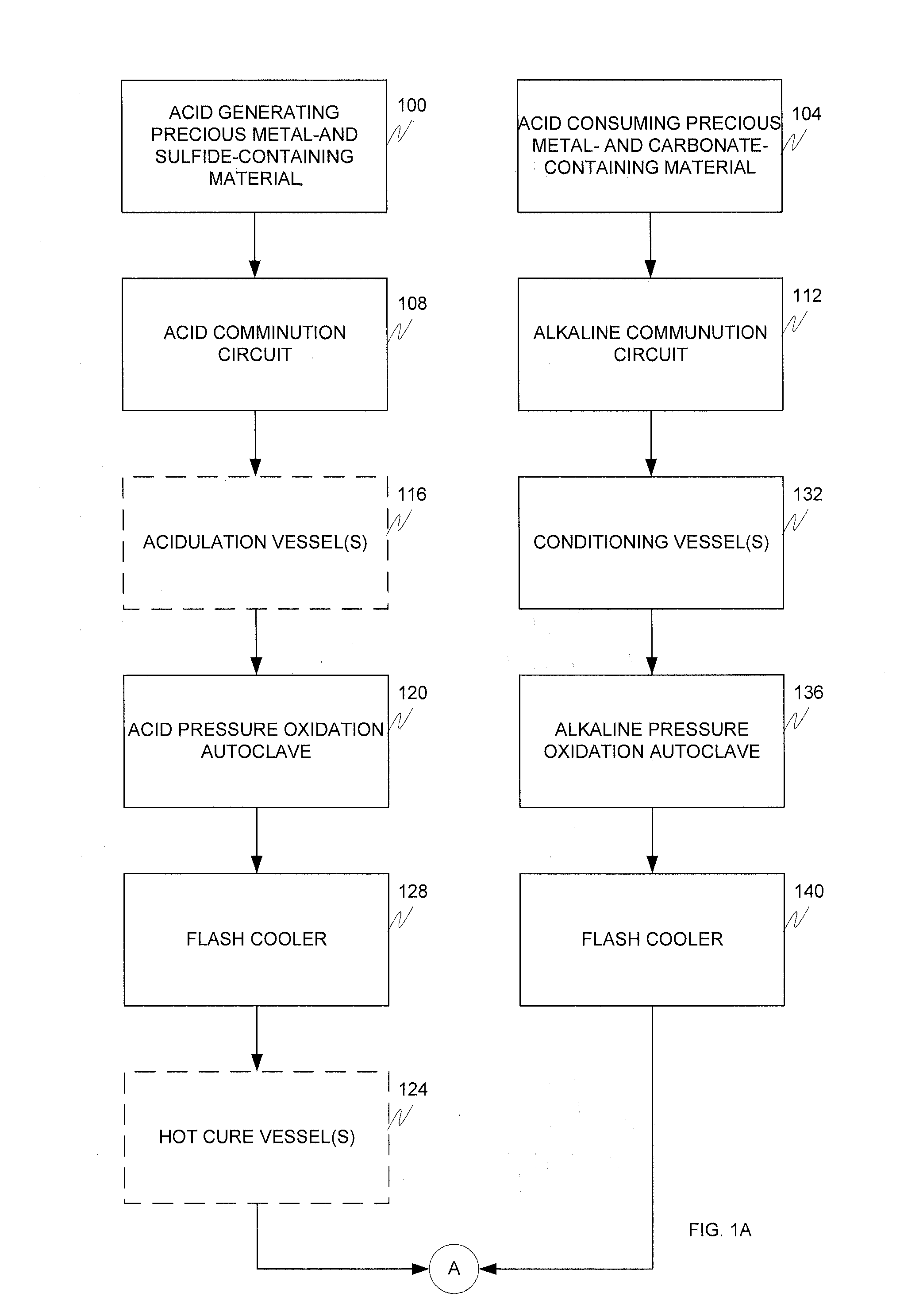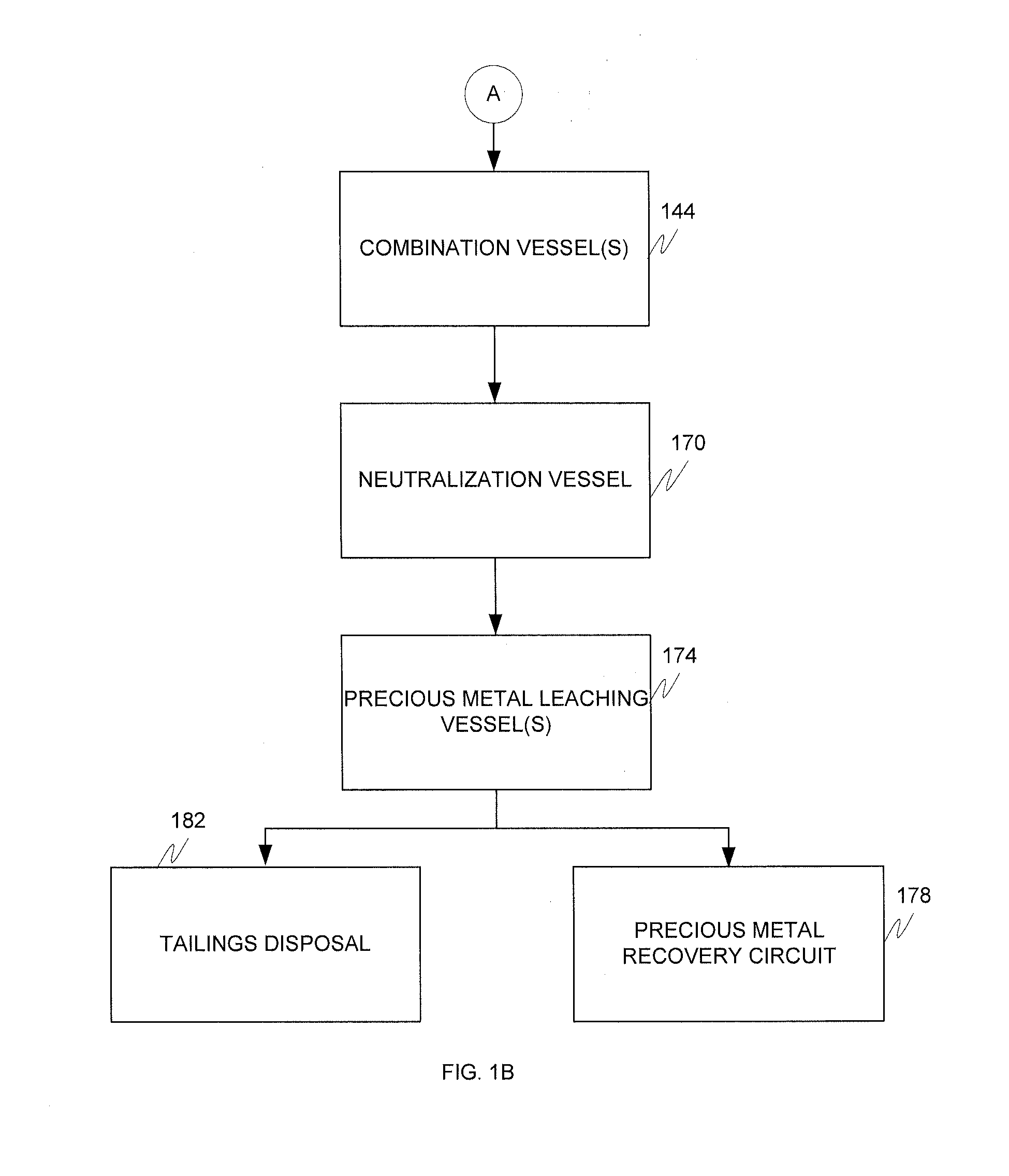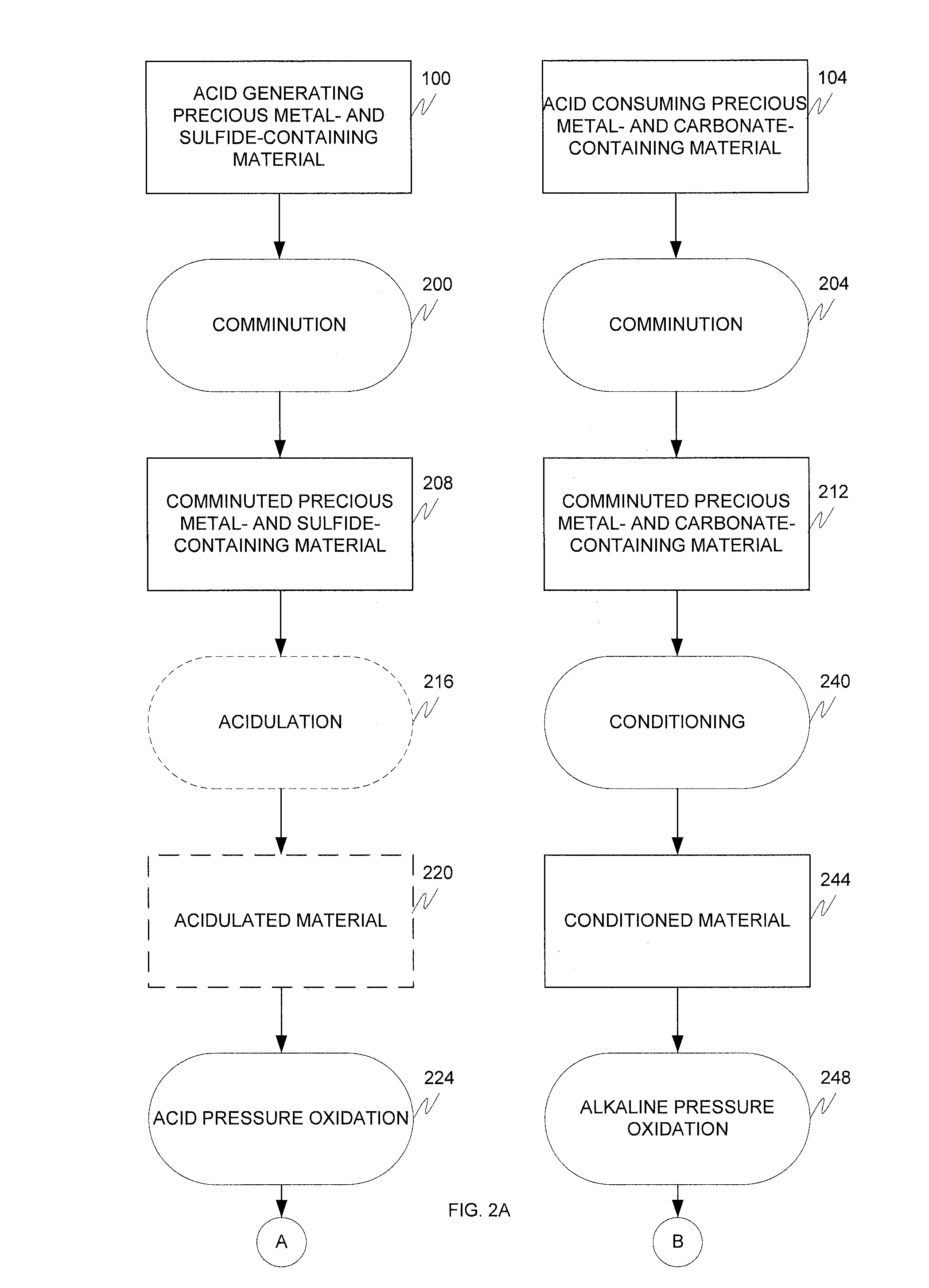Alkaline and acid pressure oxidation of precious metal-containing materials
a precious metal and acid pressure oxidation technology, applied in the direction of metal borides, process efficiency improvement, chemical instruments and processes, etc., can solve the problems of high cost of size reduction associated with liberating this gold, non-economic gold recovery by conventional cyanidation, and high cost of gold refractory sulfide refractory, etc., to reduce lime or other alkali consumption, reduce neutralization costs, and reduce lime consumption
- Summary
- Abstract
- Description
- Claims
- Application Information
AI Technical Summary
Benefits of technology
Problems solved by technology
Method used
Image
Examples
example 1
Acid Pressure Oxidation Followed by Gold Recovery by Resin in Leach
[0070]The following double refractory gold ore was ground to P80 75 microns and pre-acidulated to remove excess carbonate prior to treatment by pressure oxidation. The assay for the feed and pre-acidulated feed material were:
AcidualtedElementUnitFeed AssayAssayGoldppm2.59Total Sulfur%1.36Sulfide%0.900.86Carbonate%5.280.05TCM%0.20
[0071]Batch pressure oxidation was completed on 625 grams of the acidulated sample at a feed pulp density of 40% for a period of one hour at 200° C., with an oxygen over pressure of 80 psi. The pH of the autoclave discharge was 1.3. The sulfide level in the pressure oxidation discharge solids was measured at 0.07%, and therefore the percent sulfide oxidation was 92.7%. The pH of the discharge was adjusted and maintained at pH 8 using 39.5 kg Ca(OH)2 / tonne of ore. The gold was then recovered using strong base macroporous resin in leach, in which the gold lixiviant, calcium thiosulfate at a con...
example 2
Alkaline Pressure Oxidation Followed by Gold Recovery by Resin in Leach
[0072]The following double refractory gold ore was ground to P80 75 microns and unlike the sample in example 1, it was not pre-acidulated. The assay for the feed was:
ElementUnitAssayGoldppm10.7Total Sulfur%2.06Sulfide%1.49Carbonate%13.1TCM%0.15
[0073]Batch pressure oxidation was completed on 625 grams of sample at a feed pulp density of 40% for a period of one hour at 225° C., with an oxygen over pressure of 80 psi. 20 lb / ton of trona was added to the feed material prior to pressure oxidation. The pH of the autoclave discharge was 8.0. The sulfide content of the discharge was 0.61, and therefore the percent sulfide oxidation was 60.5%. The pH of the discharge was adjusted and maintained at pH 8 using 0.6 kg Ca(OH)2 / tonne of ore. The gold was then recovered using strong base macroporous resin in leach, in which the gold lixiviant, calcium thiosulfate at a concentration 0.1M S2O3 was employed. The percent gold recov...
example 3
Acid and Alkaline Pressure Oxidation Combined Discharge Followed by Gold Recovery by Resin in Leach
[0074]The pressure oxidation steps were repeated using the same feed materials and conditions as outlined in Examples 1 and 2. The separate discharges from the autoclave were analyzed and details are shown in Table 3.
Acid PressureAlkaline PressureElementUnitOxidation DischargeOxidation DischargepH—1.38.0Carbonate%N.AN.A.Sulfide%N.AN.A Goldppm N.A.N.A.
[0075]The two discharge slurries were then combined 50 / 50 and mixed for a period of 30 minutes with a resulting pH of 6.77. The pH of the combined discharge is higher than that of the acid pressure oxidation discharge and lower than of the alkaline pressure oxidation discharge. 3.5 kg Ca(OH)2 / tonne of ore was added to adjust the pH to 8 prior to gold recovery by resin in leach. The lime consumption for the combined discharge was 36 kg / t less than that required to neutralize Example 1 acid discharge, and only 2.9 kg / t more than that require...
PUM
| Property | Measurement | Unit |
|---|---|---|
| pH | aaaaa | aaaaa |
| weight percent | aaaaa | aaaaa |
| weight percent | aaaaa | aaaaa |
Abstract
Description
Claims
Application Information
 Login to View More
Login to View More - R&D
- Intellectual Property
- Life Sciences
- Materials
- Tech Scout
- Unparalleled Data Quality
- Higher Quality Content
- 60% Fewer Hallucinations
Browse by: Latest US Patents, China's latest patents, Technical Efficacy Thesaurus, Application Domain, Technology Topic, Popular Technical Reports.
© 2025 PatSnap. All rights reserved.Legal|Privacy policy|Modern Slavery Act Transparency Statement|Sitemap|About US| Contact US: help@patsnap.com



